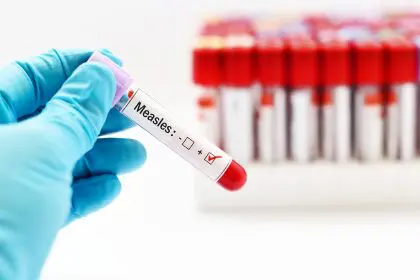The liver is essential for maintaining overall health, performing critical functions such as detoxification, nutrient processing, and protein production. As the body’s largest internal organ, it plays a vital role in everyday well-being. However, when the liver is under stress or affected by disease, it can result in liver pain, which is an important signal that something may be wrong.
Liver pain often presents in different ways depending on the underlying cause. Recognizing the unique characteristics of liver pain can help individuals identify potential health concerns and seek timely medical advice. The discomfort may manifest as a dull, persistent ache or sharp, localized pain on the right side of the abdomen, where the liver is located. In some cases, pain may radiate to the right shoulder, a characteristic symptom seen in various liver conditions. Tenderness in the right upper abdomen is also a common sign.
Recognizing associated symptoms
Liver pain is rarely an isolated symptom. It is often accompanied by a range of physical and digestive symptoms that can point to the root cause of the issue. Some individuals may notice a yellowing of the skin or eyes, known as jaundice, which is a hallmark of liver dysfunction. Dark-colored urine, pale stools, and unexplained fatigue are also frequent symptoms.
Digestive symptoms are common in individuals with liver problems. Abdominal swelling, nausea, and vomiting may accompany the pain, signaling the liver’s struggle to perform its duties. Additionally, unexplained weight changes and a loss of appetite may be observed, further indicating that the liver is under distress.
Common underlying conditions
Liver pain can stem from various underlying conditions that affect the liver’s function. Inflammatory conditions, such as viral hepatitis, autoimmune hepatitis, alcoholic hepatitis, and drug-induced inflammation, are some of the leading causes. These conditions result in inflammation of the liver and disrupt its ability to function properly, often causing discomfort and pain.
Structural issues in the liver, such as cirrhosis, fatty liver disease, benign tumors, or malignant growths, can also lead to pain. Cirrhosis, often caused by long-term alcohol abuse or viral hepatitis, involves the scarring of liver tissue, which can create intense pain. Fatty liver disease, another common cause, occurs when excess fat builds up in liver cells, leading to inflammation and, eventually, discomfort. Tumors, both benign and malignant, can also lead to liver pain if they grow large enough to press on surrounding structures.
Risk factor assessment
Understanding the risk factors for liver disease can help individuals take proactive steps to protect their liver and reduce the likelihood of developing liver pain. Lifestyle factors, such as excessive alcohol consumption, poor dietary habits, and lack of exercise, are key contributors to liver health. Those who are overweight or obese are at a higher risk of developing fatty liver disease, a condition that often leads to pain and discomfort.
Medical considerations also play a crucial role in liver health. A family history of liver disease, pre-existing medical conditions such as diabetes, and certain medications can increase the risk of liver damage. Additionally, exposure to viral infections such as hepatitis B or C may increase the risk of developing liver-related health issues. Regular check-ups and monitoring can help detect early signs of liver dysfunction before they lead to more serious problems.
Diagnostic approach
When liver pain occurs, healthcare providers will typically begin with an initial evaluation that includes a physical examination, a review of medical history, and blood tests. Blood panels, including liver function tests, can help identify whether the liver is functioning properly or if there are elevated liver enzymes, which may signal damage. Imaging studies such as ultrasounds or CT scans can be used to visualize the liver and detect any abnormalities like fatty infiltration, tumors, or signs of cirrhosis.
In cases where further investigation is needed, more advanced testing may be required. Liver function tests, viral marker tests, and autoimmune indicator tests can provide a clearer picture of the liver’s health. In some situations, a liver biopsy or tissue sampling may be performed to confirm the presence of certain diseases or damage.
Treatment strategies
The treatment approach for liver pain largely depends on the underlying cause. For individuals with mild liver issues or early-stage disease, conservative management may be the best option. This can include lifestyle changes such as reducing alcohol consumption, following a balanced diet, engaging in regular exercise, and managing stress levels. These changes can improve liver function and reduce inflammation.
For more advanced liver diseases or conditions that require medical intervention, targeted treatments may be necessary. Pain management, anti-inflammatory medications, and antiviral treatments can help manage symptoms and slow disease progression. In some cases, individuals may need specific treatments for conditions like viral hepatitis or cirrhosis, which can include medication regimens or even liver transplantation in the most severe cases.
Prevention strategies
Preventing liver pain and damage is possible through proactive lifestyle modifications. Limiting alcohol intake, eating a healthy and balanced diet, engaging in regular exercise, and maintaining a healthy weight are key to protecting liver health. Avoiding exposure to toxins, such as alcohol, illicit drugs, and harmful chemicals, can also play an important role in preventing liver damage.
Routine check-ups, vaccinations for viral hepatitis, and awareness of medications that may harm the liver are essential preventive measures. For individuals at higher risk, regular monitoring of liver function and early detection of abnormalities can lead to better outcomes.
While liver pain often signals a manageable condition, there are instances when it may indicate a more serious issue that requires immediate medical attention. Severe abdominal pain, especially when accompanied by high fever, mental confusion, or rapid weight gain, could indicate a life-threatening condition such as liver failure or acute hepatitis. In these cases, urgent care should be sought.
Long-term management
For individuals living with liver disease, long-term management is crucial for maintaining a good quality of life. Ongoing care includes regular monitoring of liver function, adherence to prescribed treatments, lifestyle modifications, and building a strong support system. By following these strategies, individuals can live well with liver disease and potentially avoid complications.
Understanding liver pain and its implications helps individuals make informed decisions about their health and seek appropriate care when needed. Early diagnosis and treatment can improve outcomes and prevent further liver damage.













